Extech SDL470-NISTL
$513UVA/UVC Light Meter/Datalogger w/NIST Order #: SDL470-NISTL Mfg #: SDL470-NISTL
Showing 28–36 of 81 results
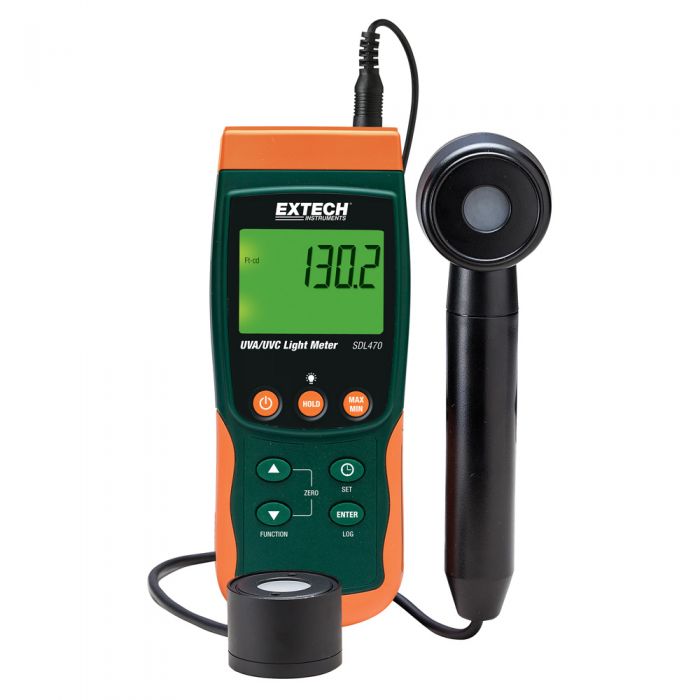
UVA/UVC Light Meter/Datalogger w/NIST Order #: SDL470-NISTL Mfg #: SDL470-NISTL
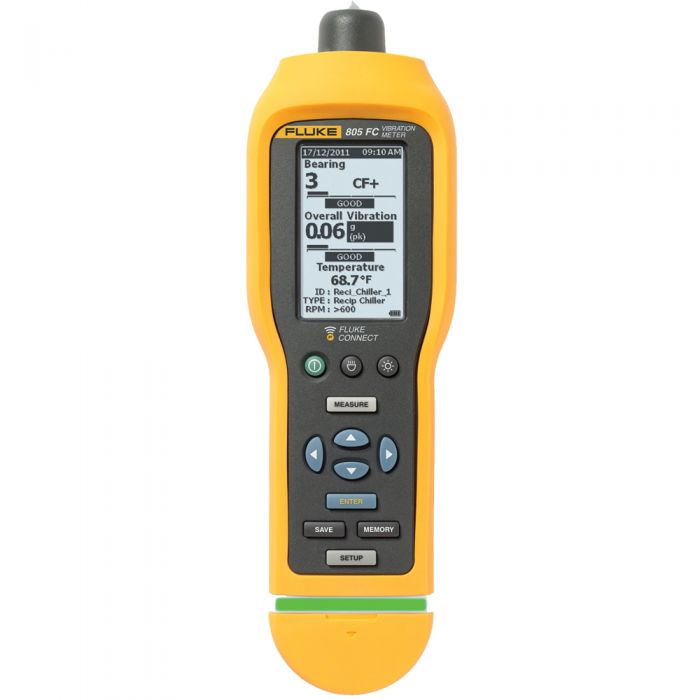
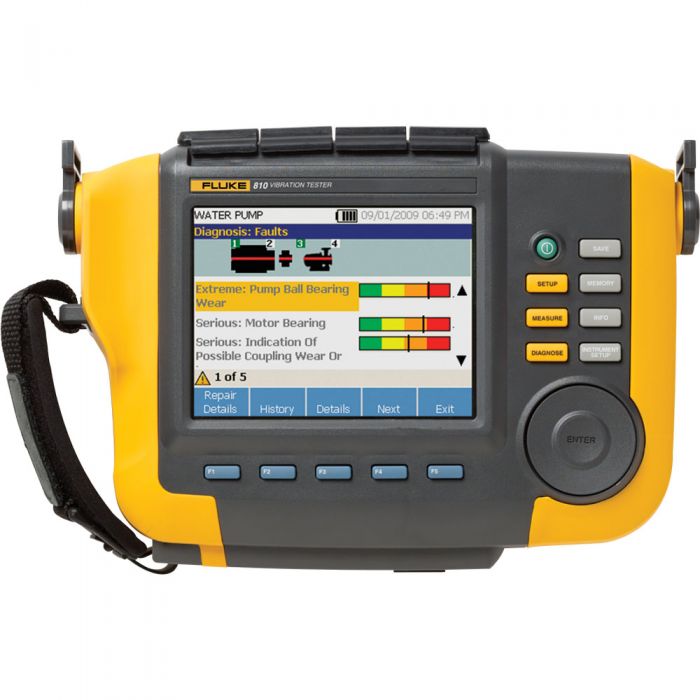
Control unplanned downtime, prevent recurring problems, set repair priorities and manage your resources with an entirely new approach to vibration testing. The Fluke 810 helps you locate and diagnose common mechanical problems and prioritize repair actions with no prior machine history.
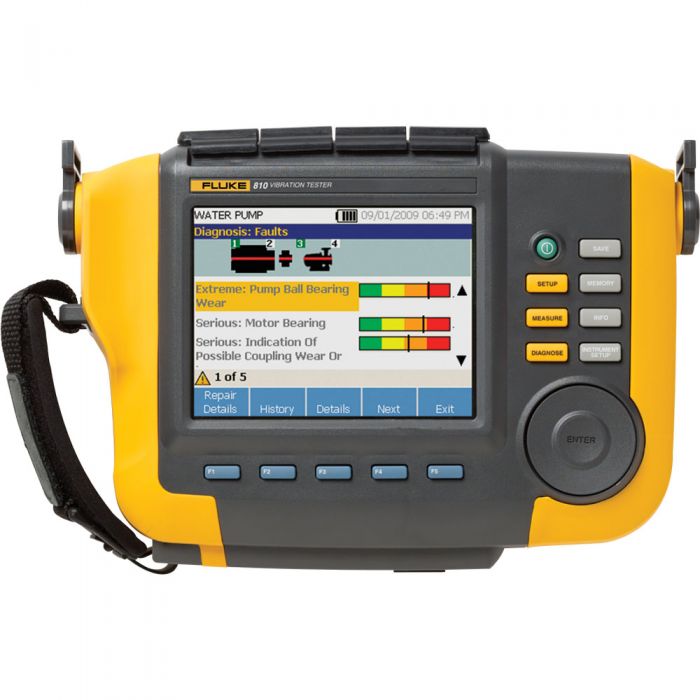
Introduction to Fluke Vibration Fluke vibration refers to the measurement and analysis of mechanical vibrations using specialized tools and equipment developed by Fluke, a globally recognized leader in precision measurement technology. Vibration measurement is a critical aspect of predictive maintenance and condition monitoring in various industries, including manufacturing, aerospace, and energy. Understanding the principles of vibration measurement involves recognizing how oscillatory motions in machinery components can indicate potential failures or inefficiencies. Accurate vibration analysis is essential for maintaining the health of machinery. It helps in early detection of mechanical issues such as misalignment, imbalance, bearing failures, and gear defects. By identifying these problems early, maintenance teams can prevent costly downtime and extend the lifespan of equipment. Fluke’s vibration measurement tools are known for their reliability and precision, making them indispensable in the toolkit of maintenance professionals. The basic principles of vibration measurement include the detection of amplitude, frequency, and phase of the oscillatory motion. These parameters are captured using accelerometers, which convert mechanical vibrations into electrical signals. The data is then analyzed to diagnose the condition of the machinery. Fluke provides a range of vibration measurement tools, including portable vibration testers, vibration meters, and sophisticated vibration analyzers, each designed to cater to different levels of diagnostic needs. Fluke’s dedication to innovation and quality makes their vibration analysis tools effective in detecting and diagnosing mechanical issues with high accuracy. Their equipment is engineered to withstand harsh industrial environments, ensuring durability and consistent performance. The importance of accurate vibration analysis in predictive maintenance cannot be overstated, as it contributes significantly to the operational efficiency and reliability of industrial machinery. Applications and Benefits of Fluke Vibration Analysis Fluke vibration analysis has become an indispensable tool across various industries, including manufacturing, automotive, aerospace, and energy. In manufacturing, for instance, vibration analysis is critical in monitoring the condition of machinery. By identifying early signs of wear and tear, maintenance teams can prevent equipment failure, thereby reducing downtime and extending the life of machinery. This proactive approach not only enhances productivity but also leads to significant cost savings. In the automotive sector, Fluke vibration analysis is used extensively to diagnose issues within vehicle components. From engine imbalances to misaligned driveshafts, the precision of vibration analysis ensures that potential problems are detected and rectified before they escalate. This results in improved vehicle performance and reliability, reinforcing customer satisfaction and reducing warranty claims. The aerospace industry also benefits significantly from vibration analysis. Aircraft components are subject to stringent safety and performance standards, and Fluke vibration tools provide the accuracy needed to meet these requirements. By regularly monitoring the vibration levels of critical parts such as turbines and rotors, maintenance teams can ensure the safety and efficiency of aircraft operations. This not only mitigates the risk of in-flight failures but also optimizes maintenance schedules. In the energy sector, particularly in power plants and wind farms, vibration analysis plays a pivotal role in the maintenance of turbines and generators. Fluke vibration tools help in detecting anomalies such as bearing failures and misalignments, which can lead to catastrophic failures if left unchecked. By integrating vibration analysis into routine maintenance programs, energy companies can enhance the reliability of their operations and achieve substantial cost savings. Case studies have demonstrated the tangible benefits of implementing Fluke vibration tools. For instance, a manufacturing plant reported a 30% reduction in unplanned downtime and a 20% increase in machinery life after incorporating vibration analysis into their maintenance strategy. Similarly, an automotive company experienced a 25% decrease in warranty claims by utilizing vibration diagnostics to enhance vehicle quality. Best practices for integrating Fluke vibration analysis into routine maintenance programs include regular training for maintenance personnel to ensure effective use of the tools. Continuous monitoring and data analysis are also essential to identify trends and make informed maintenance decisions. By fostering a culture of proactive maintenance, companies can maximize the benefits of Fluke vibration analysis, ultimately leading to improved operational efficiency and cost-effectiveness.
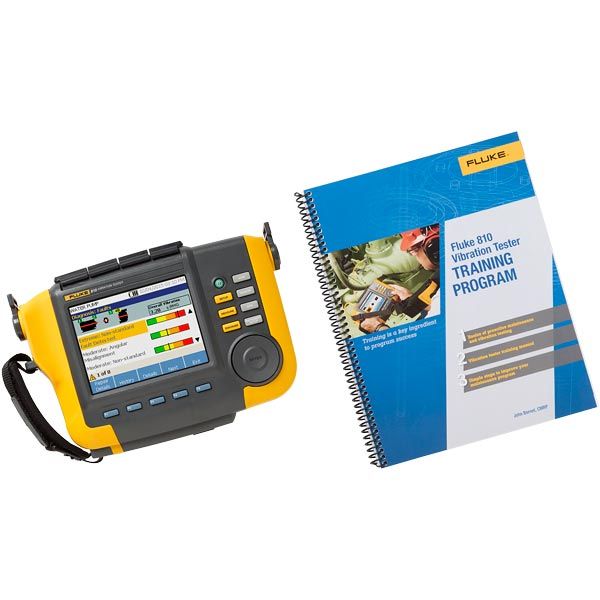
Understanding the Fluke 810: Features and Specifications The Fluke 810 is a sophisticated vibration tester specifically designed to meet the demands of maintenance professionals who require rapid identification and prioritization of mechanical issues. One of the standout features of the Fluke 810 is its built-in diagnostic software, which significantly enhances its diagnostic capabilities. This software allows users to determine the severity and root cause of mechanical problems, thus enabling more effective and timely maintenance interventions. In terms of measurement capabilities, the Fluke 810 excels with its ability to measure a wide range of vibration parameters including overall vibration, bearing condition, and specific frequencies. It is equipped with a triaxial accelerometer that ensures precise and reliable measurements, which are crucial for accurate diagnostics. Additionally, the device offers a frequency range up to 20 kHz, making it suitable for a variety of industrial applications. The display features of the Fluke 810 are designed for user convenience and clarity. It boasts a large, high-resolution LCD screen that provides clear and detailed readouts of diagnostic data. The intuitive interface facilitates easy navigation through various diagnostic functions, ensuring that even less experienced users can operate the device effectively. The display also supports multiple languages, further broadening its accessibility. Connectivity is another key area where the Fluke 810 shines. The device is equipped with USB and RS-232 ports, allowing for seamless data transfer to computers and other devices. This connectivity enables maintenance professionals to easily document and share diagnostic results, which can be invaluable for collaborative troubleshooting and historical data analysis. Moreover, the Fluke 810 supports firmware updates, ensuring that users always have access to the latest features and improvements. By leveraging these advanced features and robust specifications, the Fluke 810 enhances maintenance workflows and significantly improves equipment reliability. Whether it’s diagnosing the root cause of a mechanical issue or determining the severity of a problem, the Fluke 810 provides maintenance professionals with the tools they need to keep their operations running smoothly and efficiently. Effective Training for Optimal Use of the Fluke 810 The Fluke 810 is an advanced vibration tester designed to provide precise diagnostic data. However, to fully harness its capabilities, a structured training program is essential. Effective training encompasses both theoretical knowledge and practical skills, ensuring users can operate the device with confidence and accuracy. Understanding the fundamentals of vibration analysis is the cornerstone of any effective training program. This involves grasping the basic principles of how vibrations work, the types of vibrations detected, and the significance of various vibration patterns. Users should become proficient in interpreting the diagnostic results provided by the Fluke 810, which includes recognizing common faults such as misalignment, imbalance, and looseness. Hands-on training is equally crucial. Practical modules should focus on real-world scenarios where users can practice setting up the Fluke 810, capturing data, and performing actual diagnostics. This experiential learning approach helps users to become adept at identifying issues and executing corrective actions effectively. The ability to translate theoretical knowledge into practical skills is vital for maximizing the device’s utility in maintenance operations. Selecting the right training provider is another critical component. Look for providers with a proven track record, comprehensive curriculum, and experienced instructors. Additionally, leveraging online resources such as webinars, tutorials, and forums can supplement formal training programs. Online platforms often provide updated content, ensuring learners remain informed about the latest advancements in vibration testing technology. Continuous learning and periodic refresher courses are key to maintaining proficiency. The field of vibration analysis and diagnostic tools is constantly evolving, and staying updated with new techniques and technologies is essential. Encouraging a culture of continuous improvement within the maintenance team will not only enhance their skills but also lead to more efficient and effective use of the Fluke 810. In conclusion, a well-rounded training program that combines theoretical knowledge, hands-on practice, and continuous learning is essential for optimizing the use of the Fluke 810. By investing in comprehensive training, users can significantly enhance their diagnostic capabilities, ultimately leading to improved maintenance outcomes and operational efficiency.
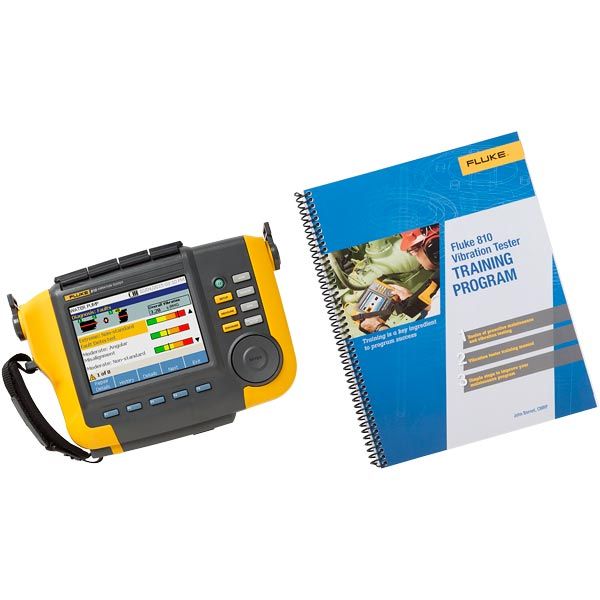
810 Vibration Tester Plus Training program book Order #: 810/ TRNG Mfg #: 4878251
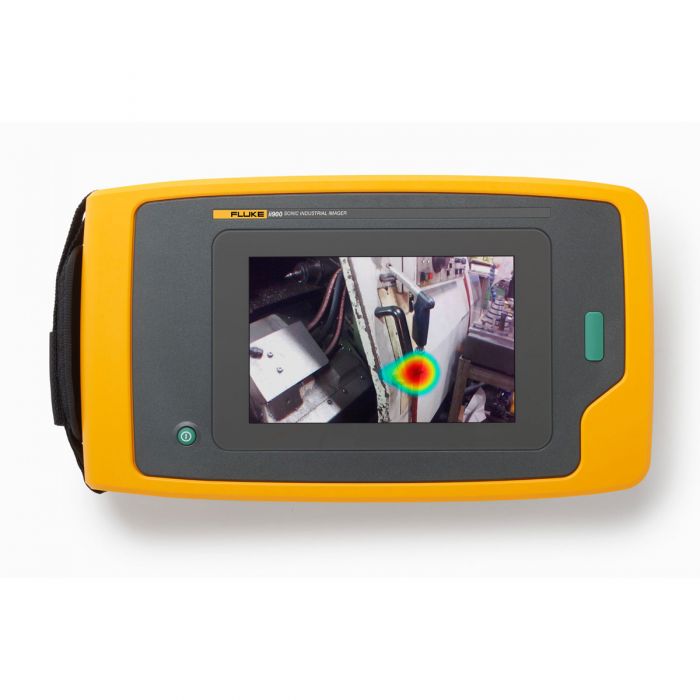
Equipped with an array of microphones for an expanded field-of-view, the handheld Fluke ii900 Sonic Industrial Imager enables maintenance teams to quickly and accurately locate air, gas and vacuum leaks in compressed air systems, even in noisy environments.

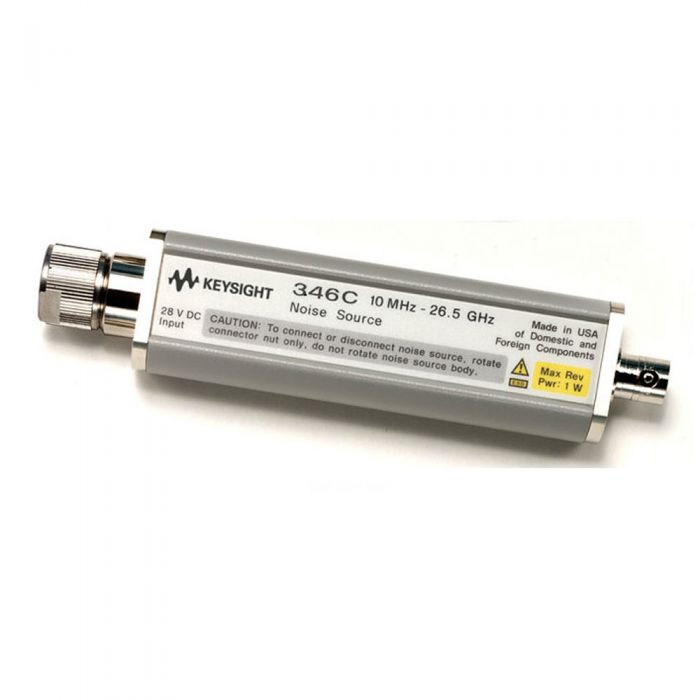
Introduction to the Keysight 346A Noise Source The Keysight 346A Noise Source is a pivotal instrument in the realm of electronic testing and measurement. Serving as a reliable generator of white noise, the 346A is extensively utilized in applications involving the characterization and analysis of communication systems, radar systems, and various RF and microwave components. Essentially, a noise source is a device that generates a known amount of noise power over a specified frequency range, which is crucial for accurate noise figure measurements in amplifiers, mixers, and other nonlinear devices. The Keysight 346A stands out due to its impressive specifications. It operates over a wide frequency range of 10 MHz to 26.5 GHz, making it versatile enough to cater to a broad spectrum of testing needs. The noise figure is a critical parameter that denotes the amount of noise the device adds to the system. With a noise figure of 5.5 dB, the 346A ensures minimal introduction of additional noise, thus preserving the integrity of the measurements. The output characteristics are equally noteworthy, providing a stable and consistent noise output, which is essential for precise and repeatable testing scenarios. Accurate noise measurements are fundamental in system design and performance evaluation. They allow engineers to determine the noise performance of their devices and systems, which in turn influences decisions on system improvements and optimizations. The ability to generate a predictable and quantifiable noise signal makes the Keysight 346A an indispensable tool for engineers and technicians. Its reliability and precision have made it a preferred choice in various industries, including telecommunications, defense, and aerospace, where high-quality noise measurements are imperative. In summary, the Keysight 346A Noise Source is more than just a noise generator; it is an essential component that enhances the accuracy and reliability of noise figure measurements. Its advanced specifications and stable output make it a cornerstone in the toolkit of professionals striving for excellence in electronic testing and measurement. Features and Benefits of the Keysight 346A The Keysight 346A Noise Source is renowned for its remarkable accuracy and reliability, distinguishing it from other noise sources available in the market. One of the standout features of the Keysight 346A is its high accuracy, which ensures that measurements are precise, thereby reducing the margin of error in critical testing environments. This high level of accuracy is particularly beneficial in applications where even minor deviations can lead to significant consequences, such as in telecommunications and aerospace sectors. Another notable feature of the Keysight 346A is its low Standing Wave Ratio (SWR). A low SWR is essential because it minimizes reflection losses, ensuring that the maximum possible signal is transmitted. This characteristic is crucial for maintaining the integrity of the signal and improving the overall quality of the measurements. The low SWR of the Keysight 346A contributes to its reliability and consistency, making it a trusted tool for engineers and technicians. The wide frequency range of the Keysight 346A further enhances its versatility. It covers a broad spectrum, making it suitable for various applications, from low-frequency telecommunications to high-frequency aerospace and defense testing. This wide range allows users to employ a single noise source for multiple testing scenarios, streamlining the testing process and reducing the need for multiple devices. Integration with other testing equipment is seamless with the Keysight 346A. Its user-friendly interface simplifies the setup and operation, enabling users to quickly integrate it into their existing testing workflows. This ease of integration reduces setup time and enhances overall testing efficiency. Engineers appreciate the intuitive design, which minimizes the learning curve and allows them to focus on the core testing tasks. The practical benefits of these features are evident in real-world applications. For instance, in telecommunications, the Keysight 346A has been instrumental in improving the precision of signal measurements, leading to better network performance and reliability. In aerospace and defense, its high accuracy and wide frequency range have facilitated rigorous testing procedures, ensuring the robustness and reliability of critical systems.
No products in the cart.